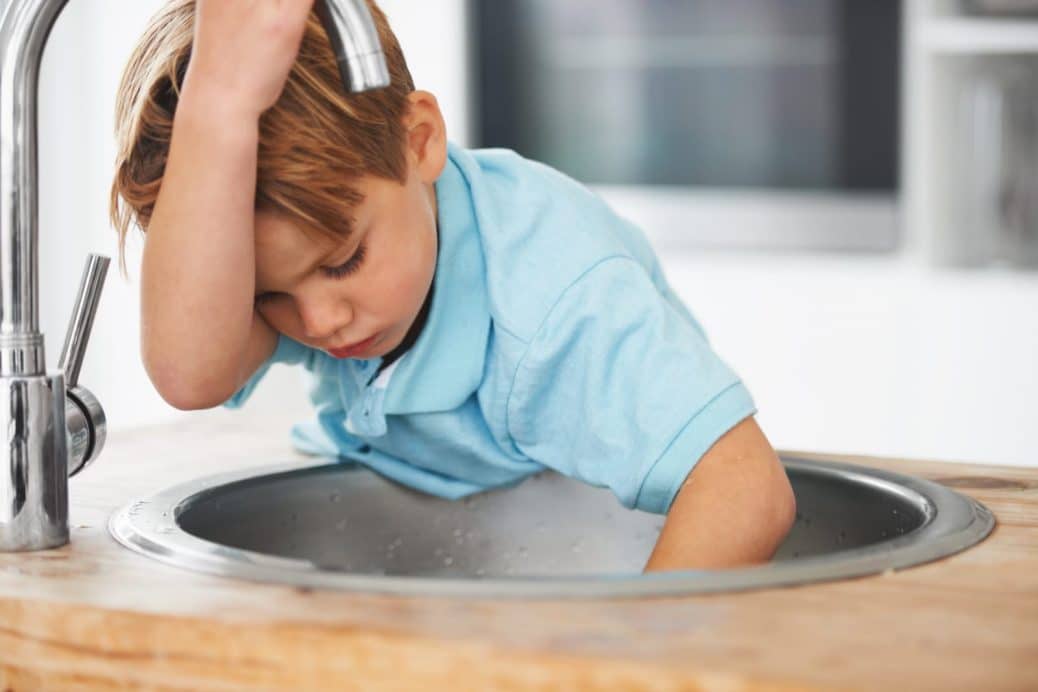Presented here down the page you can find a bunch of quality expertise pertaining to Plumbing Basics Every Homeowner Should Know.

Plumbing is an essential element of any type of home, responsible for supplying clean water for alcohol consumption, cooking, and bathing, in addition to eliminating wastewater securely. Understanding the basics of home plumbing is crucial for every single property owner to make certain appropriate maintenance, troubleshooting, and, if essential, fixings. In this beginner's overview, we'll cover the essential ideas of home plumbing to aid you become a lot more knowledgeable about exactly how it functions.
Water Furnace
The water heater is in charge of home heating water for domestic usage, including showering, food preparation, and cleaning. Usual types of water heaters include tank-type hot water heater, tankless (on-demand) hot water heater, and heatpump hot water heater. The hot water heater is attached to the water system system and delivers hot water to plumbing components as needed.
Drain System
The drain system removes wastewater from your home and carries it away to a sewer therapy facility or septic tank. It includes a network of pipes, fittings, and components that carry wastewater from plumbing fixtures to the primary drain line or sewage-disposal tank. Correct drainage is necessary to protect against obstructions, back-ups, and sewer leaks.
Air flow System
The ventilation system helps keep appropriate atmospheric pressure and protect against sewer gases from entering your home. Vent pipes, also called vent heaps, extend from plumbing components to the roofing, permitting sewage system gases to leave securely outdoors. Ventilation pipelines additionally allow air to go into the drainage system, facilitating smooth wastewater flow and stopping suction or vacuum impacts.
Supply Of Water System
The supply of water system brings clean water into your home from a local water resource or an exclusive well. It includes a main water line that attaches to your home's plumbing system, usually situated underground. A water meter determines the quantity of water eaten, while a shut-off shutoff permits you to regulate the flow of water into your home.
Plumbing Fixtures
Plumbing fixtures are tools that supply water to numerous parts of your home and include sinks, taps, toilets, showers, tubs, and devices such as dish washers and cleaning makers. Each fixture is linked to the water system system via pipelines and installations and might have its shut-off shutoff for upkeep or emergencies.
Common Plumbing Tools
Having the right tools accessible is crucial for doing fundamental plumbing fixings and upkeep jobs. Typical plumbing tools consist of flexible wrenches, monkey wrench, pliers, pipeline cutters, hacksaws, plungers, augers (or drainpipe snakes), and Teflon tape. Having these tools readily offered can help you take on minor plumbing issues successfully.
Standard Plumbing Repair Services
While some plumbing repairs may require expert assistance, many common concerns can be resolved with standard do it yourself strategies. Learning exactly how to repair a leaking tap, unclog a drain, replace a bathroom flapper, or repair a dripping showerhead can save you time and money on plumbing repair work.
Final thought
Comprehending the essentials of home plumbing is vital for every home owner to keep a safe, practical, and effective plumbing system. By familiarizing on your own with the water system, plumbing components, water drainage system, air flow system, typical plumbing tools, and standard repairs, you can with confidence attend to minor plumbing issues and ensure your home's plumbing system operates efficiently.
Plumbing for Beginners: A Comprehensive Guide
If you’re a beginner when it comes to plumbing, don’t worry; you’re not alone. Plumbing may seem intimidating, but with the right knowledge and a little practice, you can handle many common plumbing issues on your own. In this comprehensive guide, we will demystify the world of plumbing for beginners, providing you with the basic knowledge and skills needed to tackle common plumbing problems and even take on some DIY plumbing projects.
The Importance of Basic Plumbing Knowledge for Beginners:
First and foremost, basic plumbing knowledge gives you a solid foundation. It helps you grasp the key concepts and terminology that are essential in this field. By learning the basics, you’ll be able to build upon that knowledge and tackle more complex plumbing tasks in the future.
Having a basic understanding of plumbing also enables you to handle common issues that may arise in your home. Picture this: a leaky faucet or a clogged drain. With some basic plumbing knowledge, you’ll have the confidence to troubleshoot and fix these problems on your own. It saves you from unnecessary expenses and the hassle of waiting for a professional to arrive.
As a beginner, learning the basics of plumbing empowers you to take care of your own home. It gives you a sense of independence and self-reliance. You’ll no longer have to rely solely on professionals for every small issue that pops up. Instead, you can handle many tasks yourself, saving time and money in the process.
Remember, everyone starts as a beginner. Embrace the learning process and take small steps to expand your plumbing knowledge. There are plenty of online resources, tutorials, and even local workshops that talk about plumbing for beginners.
Essential Tools for Plumbing for Beginners
As you start your plumbing journey, having the right tools in your toolbox is crucial. Let’s explore some of the must-have tools:
Adjustable Wrench:
This versatile tool is a staple in any plumber’s toolbox. It allows you to tighten or loosen nuts and bolts of various sizes. Make sure to have an adjustable wrench with a comfortable grip.
Pipe Wrench:
A pipe wrench is specifically designed for gripping and turning pipes. It has serrated jaws that provide a strong grip, making it easier to loosen or tighten threaded pipes and fittings.
Plunger:
The plunger is a simple yet effective tool for clearing clogged drains and toilets. It creates suction when you push and pull, helping to dislodge blockages. Keep a good-quality plunger handy for those unexpected clogs.
Pipe Cutter:
When it comes to cutting pipes, a pipe cutter is your go-to tool. It creates clean, precise cuts without damaging the pipe. Look for a pipe cutter that can handle the pipe sizes you’re working with.
Hacksaw:
A hacksaw is useful for cutting through pipes, screws, and other materials. It’s a versatile tool that can handle different cutting tasks. Remember to use a blade suitable for cutting metal.
Tape Measure:
Accurate measurements are crucial in plumbing. A tape measure allows you to measure pipe lengths, distances, and dimensions accurately. Opt for a sturdy tape measure that extends a good length.
Pliers:
Pliers come in handy for various tasks, such as gripping, bending, and cutting. Slip-joint pliers with adjustable jaws are great for gripping pipes, nuts, and bolts.

We had been made aware of that editorial on Plumbing basics: How your home plumbing works through someone on our other site. Do you know about somebody who is in the market for the topic? Please feel free to share it. Thanks so much for taking the time to read it.
Give Me A Quote!
Comments on “Discovering the Essentials of Home Plumbing: A Beginner's Introduction”